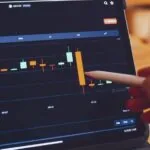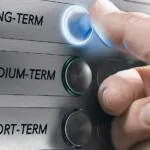Learn market analysis, identify buying opportunities, set take profit and stop loss orders, manage risk, and use technical analysis tools while trading crypto.
If a trader wants to truly master crypto trading, it is essential to understand a few critical factors to know when to buy or sell cryptocurrencies. From understanding market analysis, using technical indicators, diversifying trade portfolios, devising different strategies, managing risk and money, and identifying the best buying opportunities, traders must know the ins and outs of the crypto trading world and make informed decisions to make profits.
This article will study tips and tricks to make smart decisions and know when to trade crypto.
Understand Market Analysis
Understanding market analysis is an essential skill for any crypto trader. Traders must analyze market charts, trends, technical indicators, and patterns to make rational trading decisions. Some of the most popular technical indicators used in crypto trading include the relative strength index (RSI), moving averages, and Bollinger Bands.
Analyzing market trends and learning to read technical charts can help traders make sound trading decisions and enhance their chances of success. Additionally, analyzing the crypto market requires an extensive understanding of all the underlying factors, which involves monitoring prevalent sentiment, social media trends, news events, and fundamental analysis. Evaluating these variables will allow traders to make informed trading decisions.
Understanding that successful crypto trading involves a blend of technical expertise and up-to-date knowledge of economic and political events occurring internationally is essential. Additionally, using automated trading tools such as crypto trading bots is important to maintain discipline and keep emotions away from crypto trades.
Identifying Buying Opportunities
An essential element of successful crypto trading is to choose appropriate buying opportunities and the right digital assets for the portfolio. Analyzing technological advancements, investors’ trust, and market trends are essential factors to consider while identifying profitable crypto trading opportunities. Traders must balance future profitability and high-risk trading, which requires extensive research and ecosystem analysis. Different digital currencies have unique development teams, adoption rates, and roadmaps that determine their future in the long run. Hence, traders should choose crypto projects that have solid growth potential and fundamentals to ensure steady profits in the long run. For those looking to enter the market with ease, platforms that allow users to Purchase Bitcoin with PayPal provide a simple and secure method to start investing, making it more convenient to capitalize on well-researched buying opportunities.
Setting Profit Targets and Stop Losses
Another essential tip traders will require during crypto trading is setting profit targets and stopping losses. Take profit and stop loss orders get triggered automatically, and traders get less tempted to micromanage their trade portfolios. Stop losses can instill discipline in the traders and help them avoid emotional trading by encouraging them to identify prominent entry and exit points. Setting stop losses also helps them build an efficient framework for a trade’s life cycle and increase focus on the returns. Both take profit and stop loss orders help avoid making hasty decisions based on price fluctuations in the short term.

Traders should set their stop loss orders at a level based on how much they are willing to lose on each crypto trade. The trader’s risk profile heavily influences this. For instance, some traders would like to cap their losses at 10% and set their stop loss orders suitably. Alternatively, technical indicators may suggest significant support and resistance levels for traders to use as a guide.
In addition to setting manual stop-loss orders, traders can also use crypto trading bots to automate this process. Trading bots for crypto are software programs that can be used to automatically trade cryptocurrencies. They can be programmed to set stop loss orders, take profit orders, and other trading strategies. This can help traders to avoid making emotional trading decisions and to stay disciplined with their risk management.
Managing Risk and Diversification
Both novice and professional traders must understand that money and risk management requires continuous modification and evaluation. Implementing these effective trading strategies can help traders protect their trades and investment against risks and maximize their returns. Most successful traders carry out risk and money management in crypto trading. Traders must invest adequate time and effort in learning about effective trade strategies in risk management to avoid missing out on profitable opportunities while trading in cryptocurrencies.

Additionally, diversification is another essential strategy to maximize returns and minimize risks in crypto trading. Traders must try not to put all their money into a single cryptocurrency but consider diversifying their portfolio by trading and investing in multiple digital assets. This will help them spread the risks and take advantage of varied market opportunities. In addition to this, they can consider trading in other financial assets, such as precious metals or stocks, to further diversify their portfolio. Another essential strategy is using a mix of high-reward/high-risk and low-risk trading options to help traders achieve their desirable returns in crypto trading.
Utilizing Technical Analysis Tools
Lastly, traders must analyze every technical aspect and its relevant indicators to understand how the crypto trading market works. Professional traders often use various financial tools, including moving average convergence divergence (MACD), relative strength index (RSI), and stochastic oscillators. These technical indicators help traders identify market trends and potential entry or exit points and measure momentum for crypto trades. Traders must correctly interpret these technical indicators to investigate their trade results thoroughly. However, it is recommended that traders not solely rely on technical indicators but also keep monitoring if there is any discrepancy in the price patterns or other developments that usually follow market technical analysis.
Furthermore, traders must be aware of market sentiment and psychology and monitor fundamental factors of the industry or economy that may affect their trading decisions. Although technical analysis is relatively new in cryptocurrencies, its development has been prevalent in the stock trading market. By the 20th century, computerization made it more efficient to trade with technical analysis that integrated into the automated trading systems and facilitated advancements in algorithmic crypto trading today.
Other Reliable Source: https://www.cryptonewsz.com/
Conclusion
In conclusion, crypto trading is a lucrative strategy if it is approached with the right skills and knowledge. Traders can make money trading in digital assets by understanding market analysis and the fundamentals of crypto and blockchain technology. They need to stay informed about crypto market news and trends. Note that crypto is highly volatile, and the market is highly unpredictable. Hence, there is always some risk that may lead to losses. Crypto trading is challenging and complex for novice crypto traders. It is recommended to seek professional advice from tax experts, financial advisors, and other crypto professionals who can help traders navigate the challenges of crypto trading.
Additionally, they can join online communities and engage with other professional traders who can provide valuable support and insights. Note that guidance should be sought only from reliable and trusted sources so traders can increase their chances of success in the most rapidly evolving and dynamic world of crypto trading.

























































































